[Hidden] Content preview
Lorum ipsum
Describe tasks simply and clearly. Let assignees create their own issues and choose the level of detail required to complete the task.
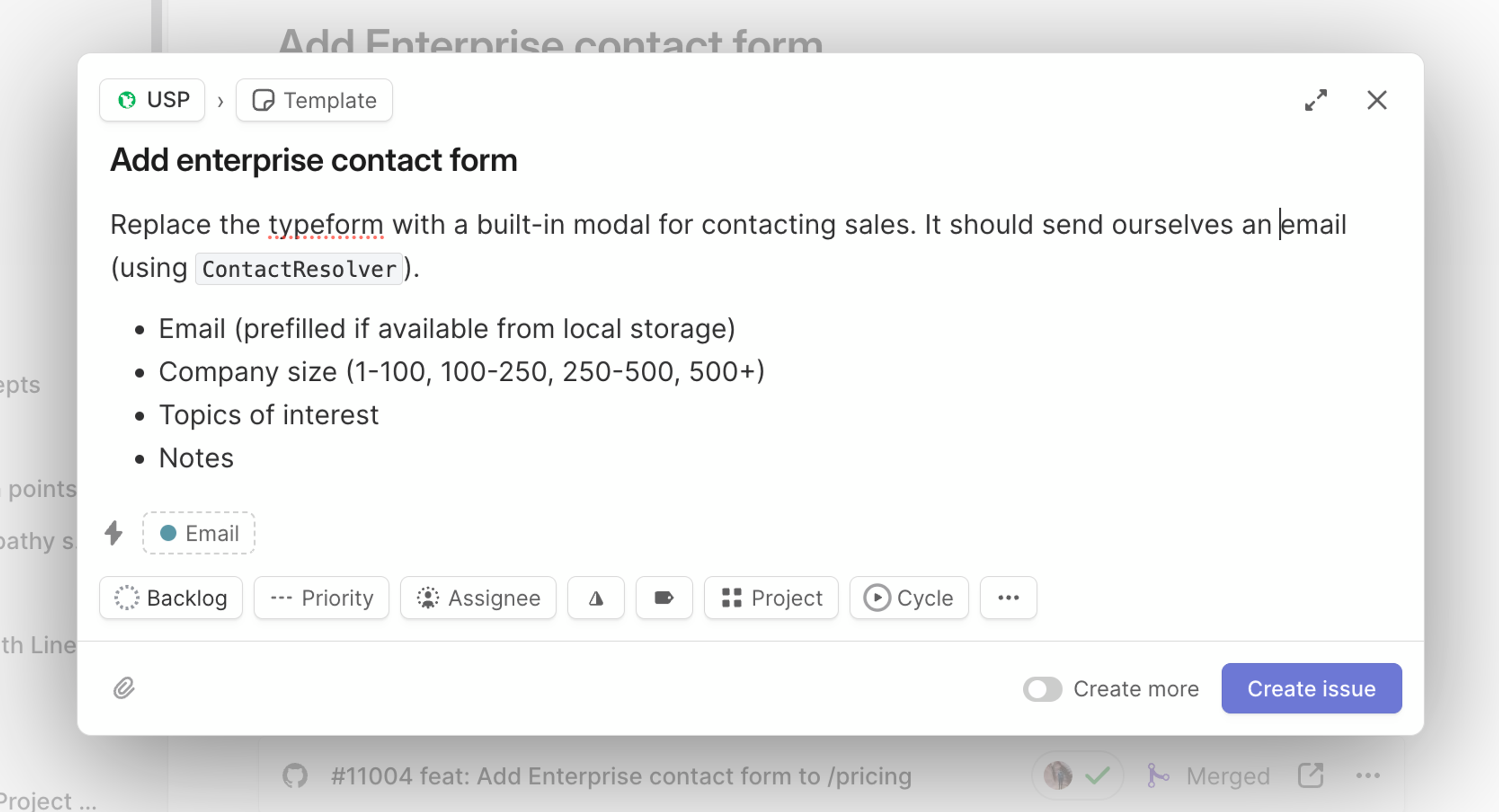
Quote customers directly in bug reports and feature requests. Link to original messages so assignees can get more context and track frequency of reports.
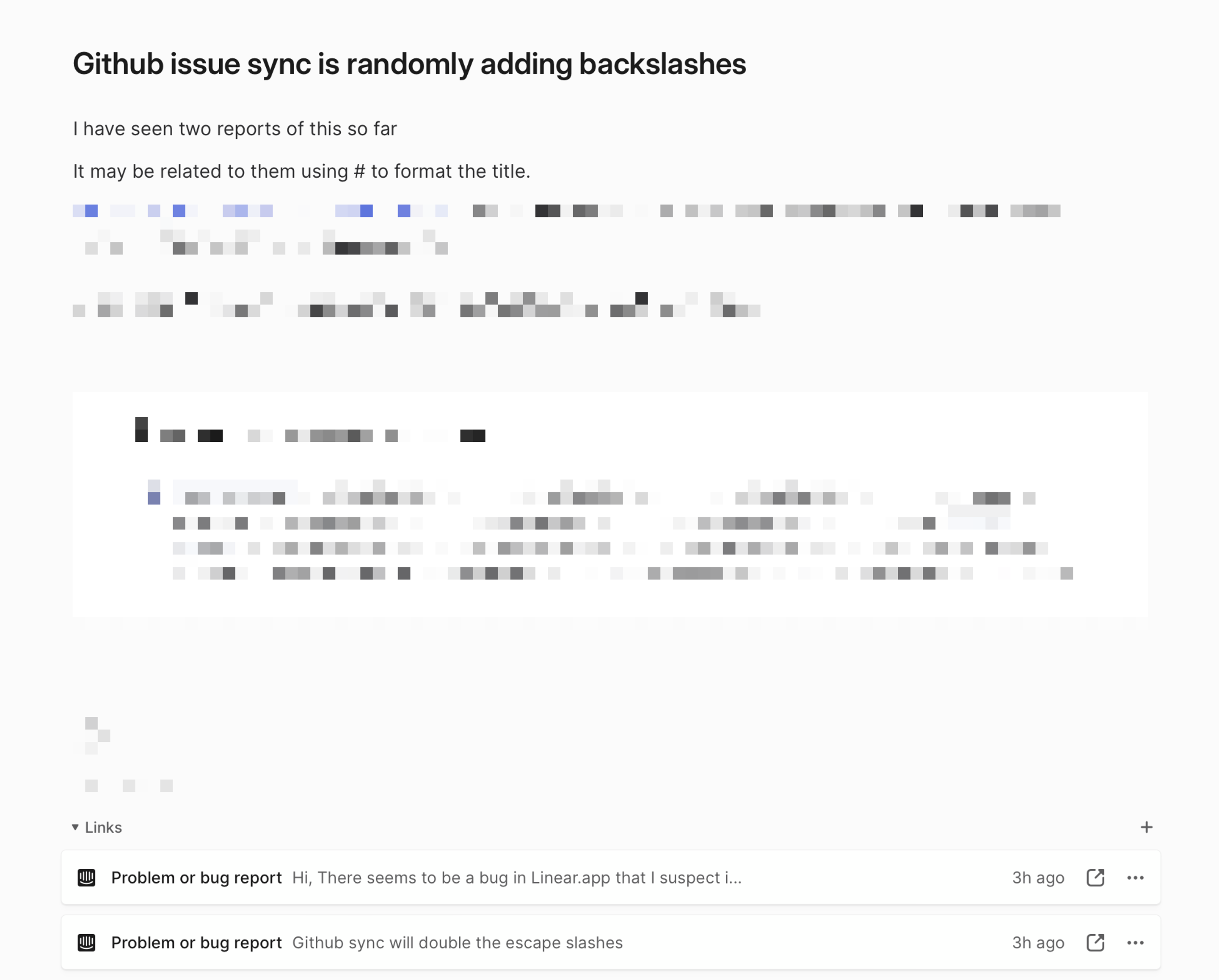
Discuss user problems at the project and feature level, to keep conversations in context and focused on the most important details.
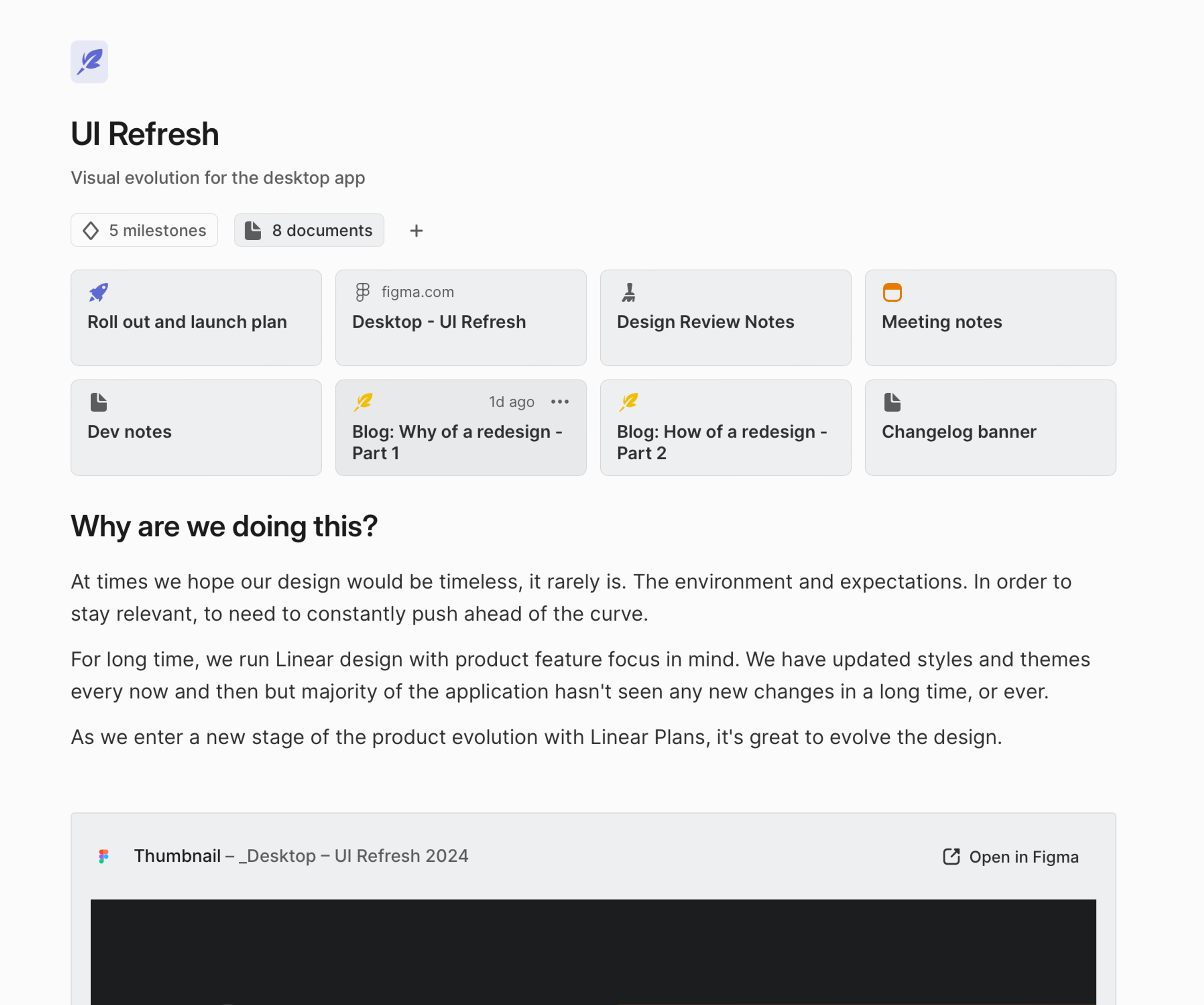
Run cycles, not sprints
Lorem ipsum dolor sit amet, consectetur adipiscing elit, sed do eiusmod tempor incididunt ut labore et dolore magna aliqua. Ut enim ad minim veniam, quis nostrud exercitation ullamco laboris nisi ut aliquip ex ea commodo consequat. Duis aute irure dolor in reprehenderit in voluptate velit esse cillum dolore eu fugiat nulla pariatur. Excepteur sint occaecat cupidatat non proident, sunt in culpa qui officia deserunt mollit anim id est laborum.
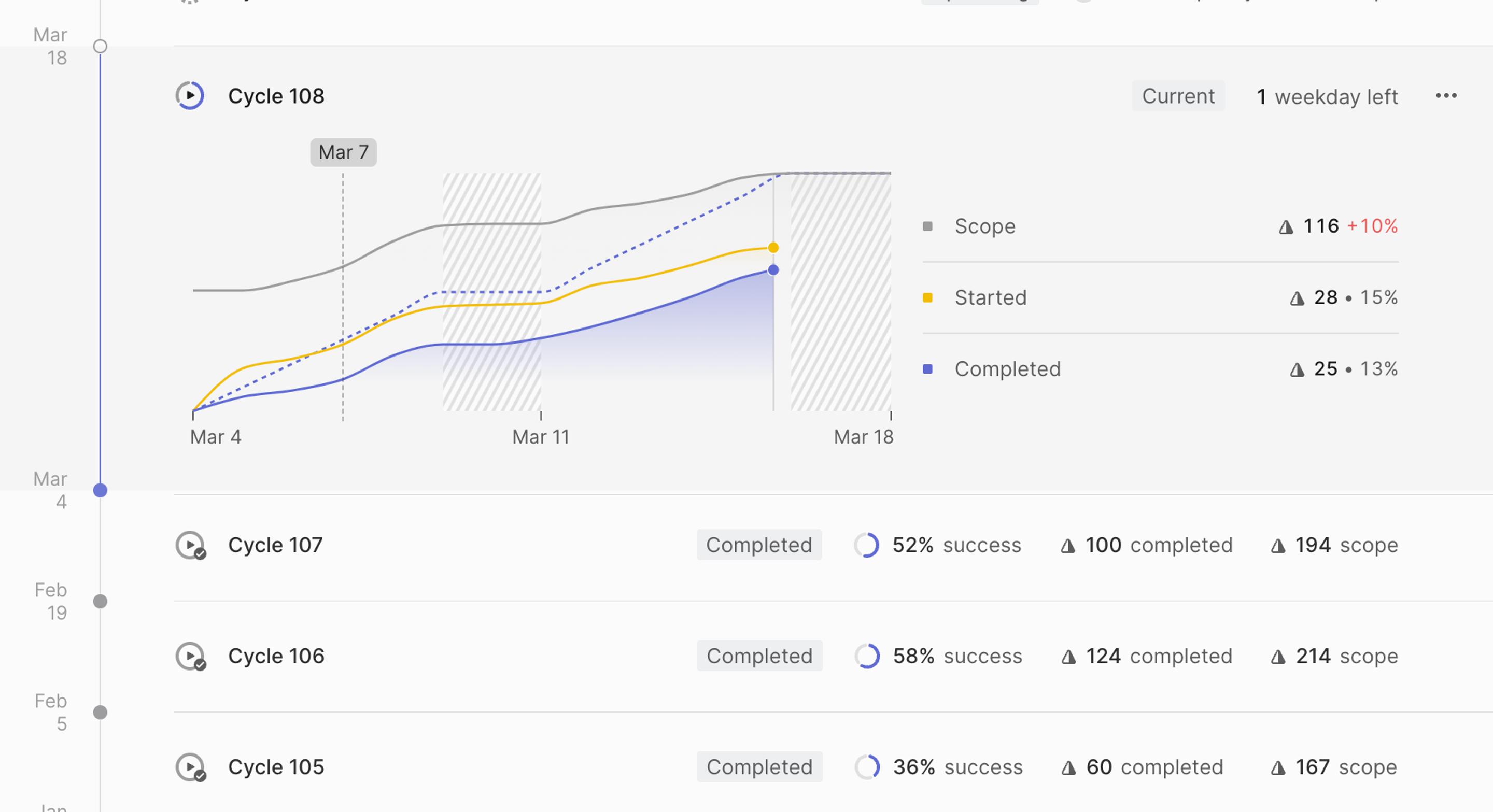
Instead of sprints, Scrum teams moving to Linear should transition to working in cycles. Cycles are more lightweight than sprints because they don’t tie in release goals and don’t require teams to pick particular start and end dates. Teams work to complete selected tasks and work on a fixed timeframe, e.g. for two weeks starting on Tuesdays. Unfinished issues are not treated as a failure; issues simply roll over to the next cycle, and momentum continues to build.

The goal of cycles is to provide focus and encourage momentum by removing the fanfare and using automation to speed up planning. A more lightweight process means you can move faster and get more done.
The work of transitioning to cycles is primarily about reflecting on what rituals actually help you ship better quality work and then letting go of the rest. You can still run stand-ups, planning meetings, and reviews when using cycles. You can even start or end cycles on specific dates. But many teams find, over time, that they don’t have to. Cycles give enough structure to build momentum without imposing layers of process that supersede the work itself.
Advice for switching to Linear
Adjust your cycle view to how tasks are distributed across team members, labels, or other parameters. Quick filters make let you focus on specific issues.
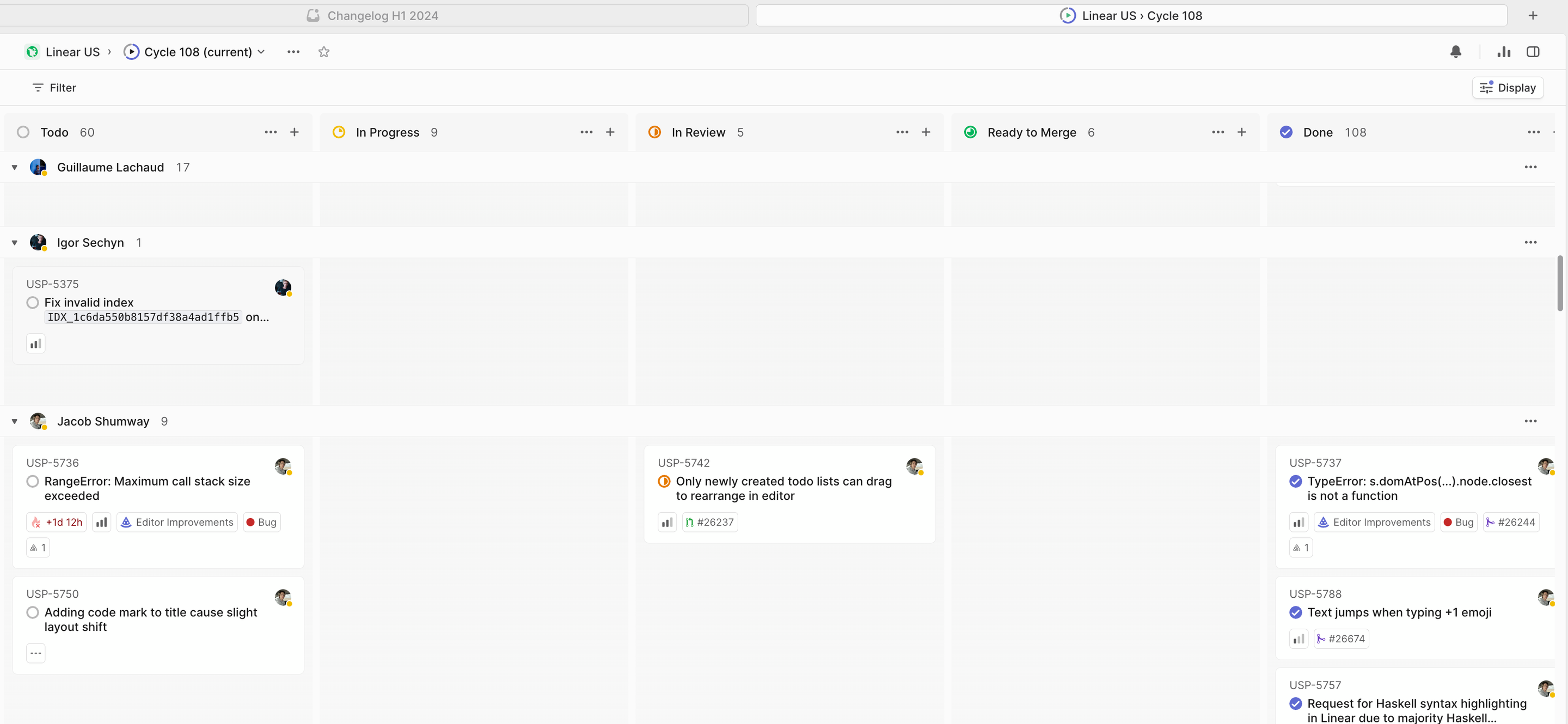
Cycles run on a regular rotation and can be customized so that issues matching specific statuses are automatically added to them. Incomplete issues simply roll over to the next cycle.
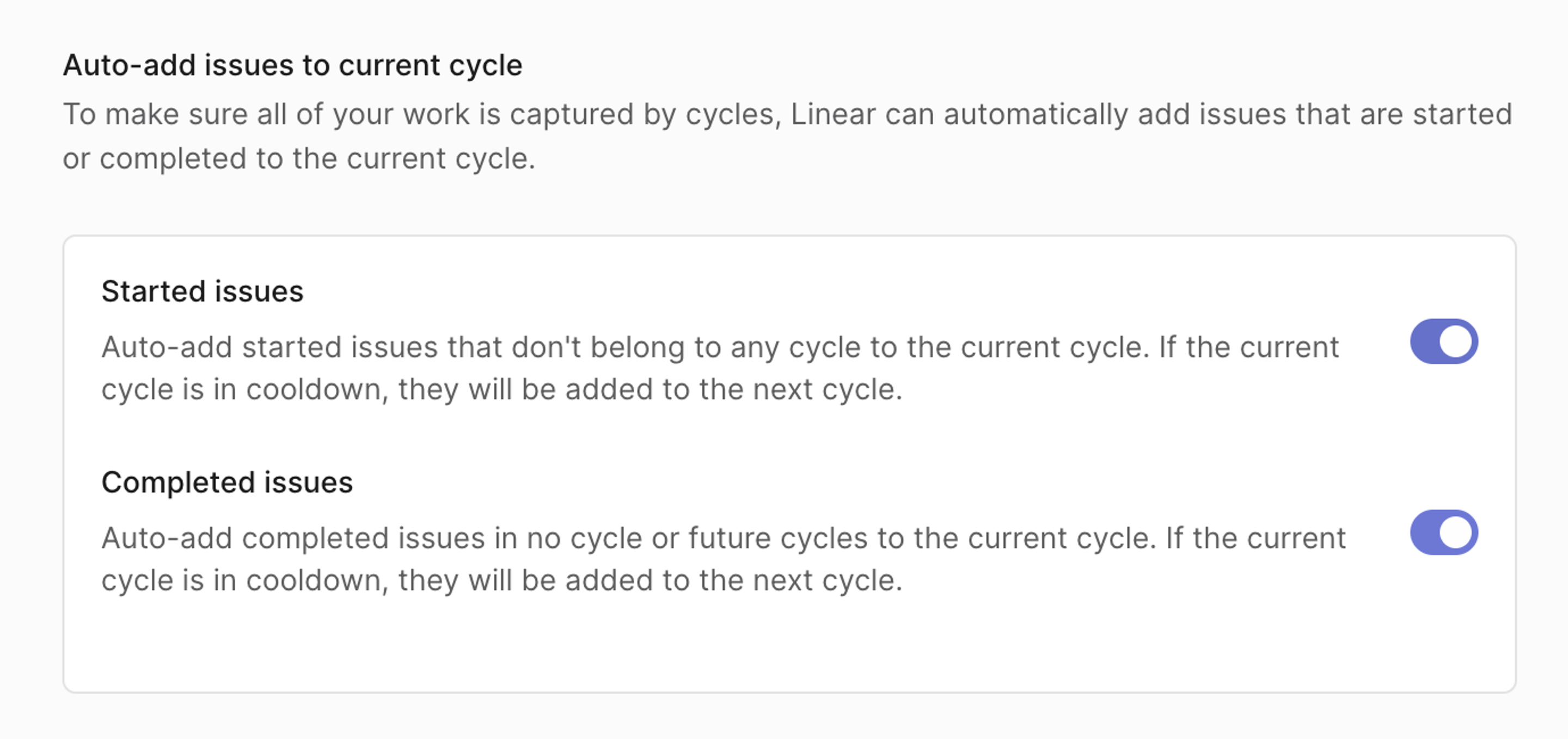
See progress during the cycle and compare velocity across multiple cycles.
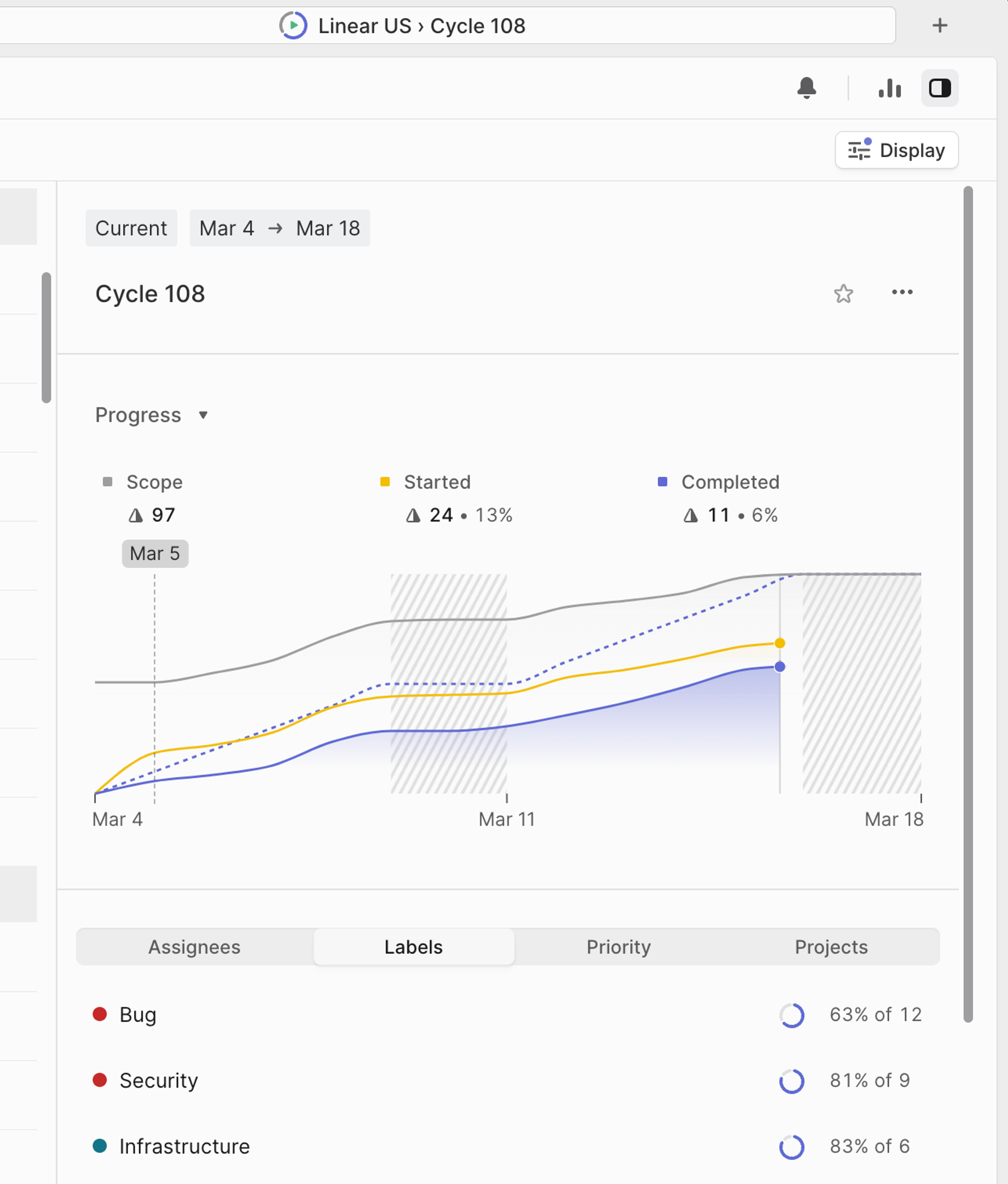
Automate backlog management
Another common practice in Agile is to curate a centralized, prioritized list of tasks in your backlog. These backlog items come from the product roadmap along with bugs, improvements, and issues filed to the team. In Scrum and in Kanban, product owners groom the backlog regularly and sometimes prioritize it in the exact order issues should be completed.
Traditional backlog management feels like an anti-pattern for modern product development. It encourages busy work, prioritizing issues that may not ever be completed. As companies scale, their backlogs grow exponentially, which makes constant management of the backlog impractical.
When moving to Linear, teams still use backlogs but they no longer have to groom them or manage them so strictly. Instead, they can use automations and features to replace this manual work. Issues close automatically after a few months if they haven't been updated. Teams can trust important requests will resurface when someone comments on the issue or links additional customer reports. The notification that an issue was auto-closed doubles as a reminder to the issue creator to look into the issue and decide if it’s truly worth fixing.
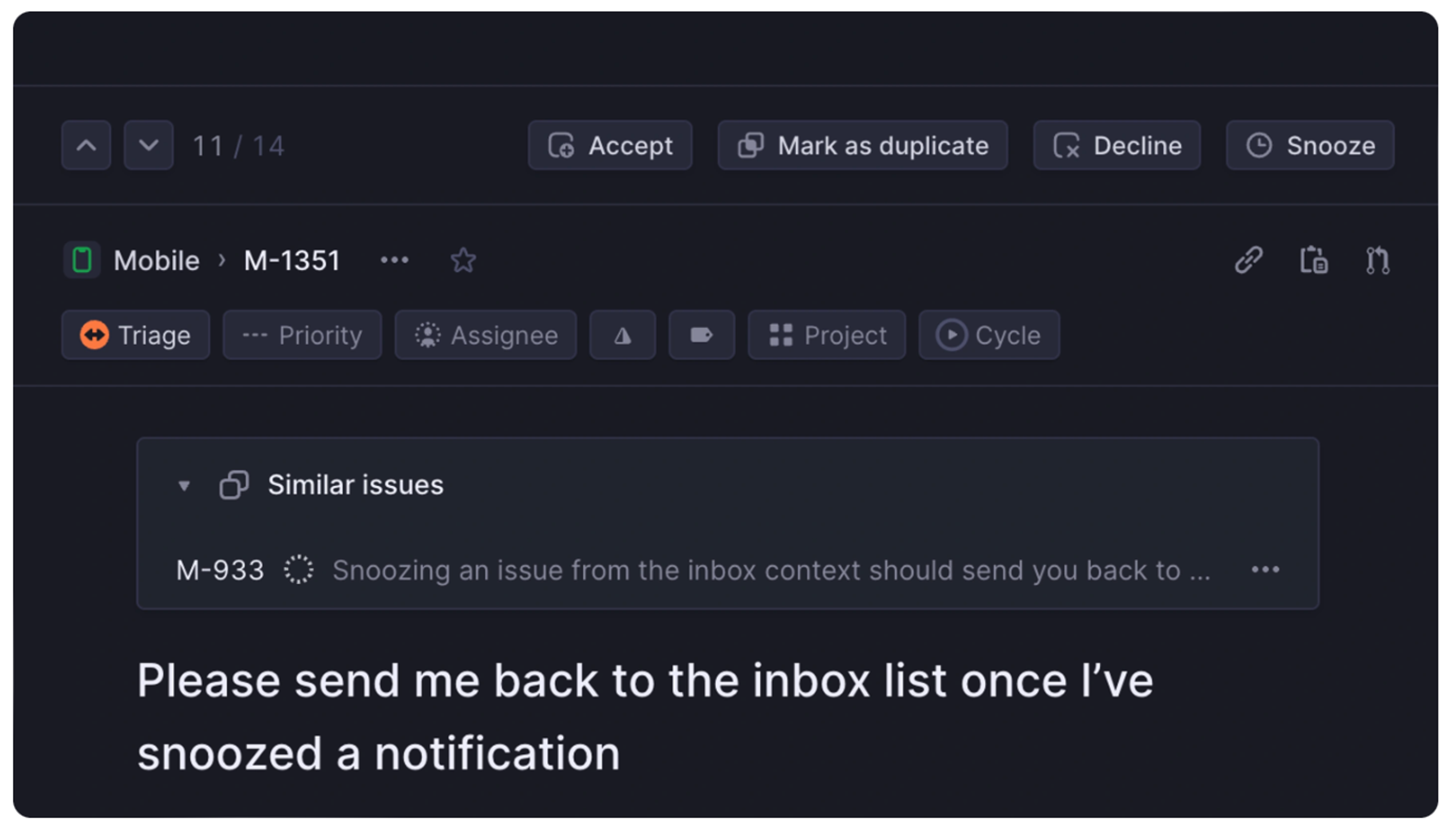
AI also supports this automation in a feature like Similar Issues, which surfaces issues that might be duplicates of the issue you’re looking at or relevant to the work you’re currently doing. Over time, automatic assistance like this tames the backlog much more efficiently than heavyweight and manual backlog grooming meetings.
In Linear, carefully designed features naturally surface important issues for teams. Teams can set SLAs to add deadlines and priorities to new issues based on a set of parameters (e.g. a high-priority vulnerability reported to the security team). You can keep track of which customers are affected by a bug by linking conversations from Intercom, Zendesk, Front, or Slack. Triage gives teams a place to review issues and requests from other teams, and gives those other teams the flexibility to report issues without feeling like they’re adding work or interrupting a team’s workflow.
Advice for switching to Linear
Automations in Linear close and archive stale issues so you don't have to groom the backlog manually.
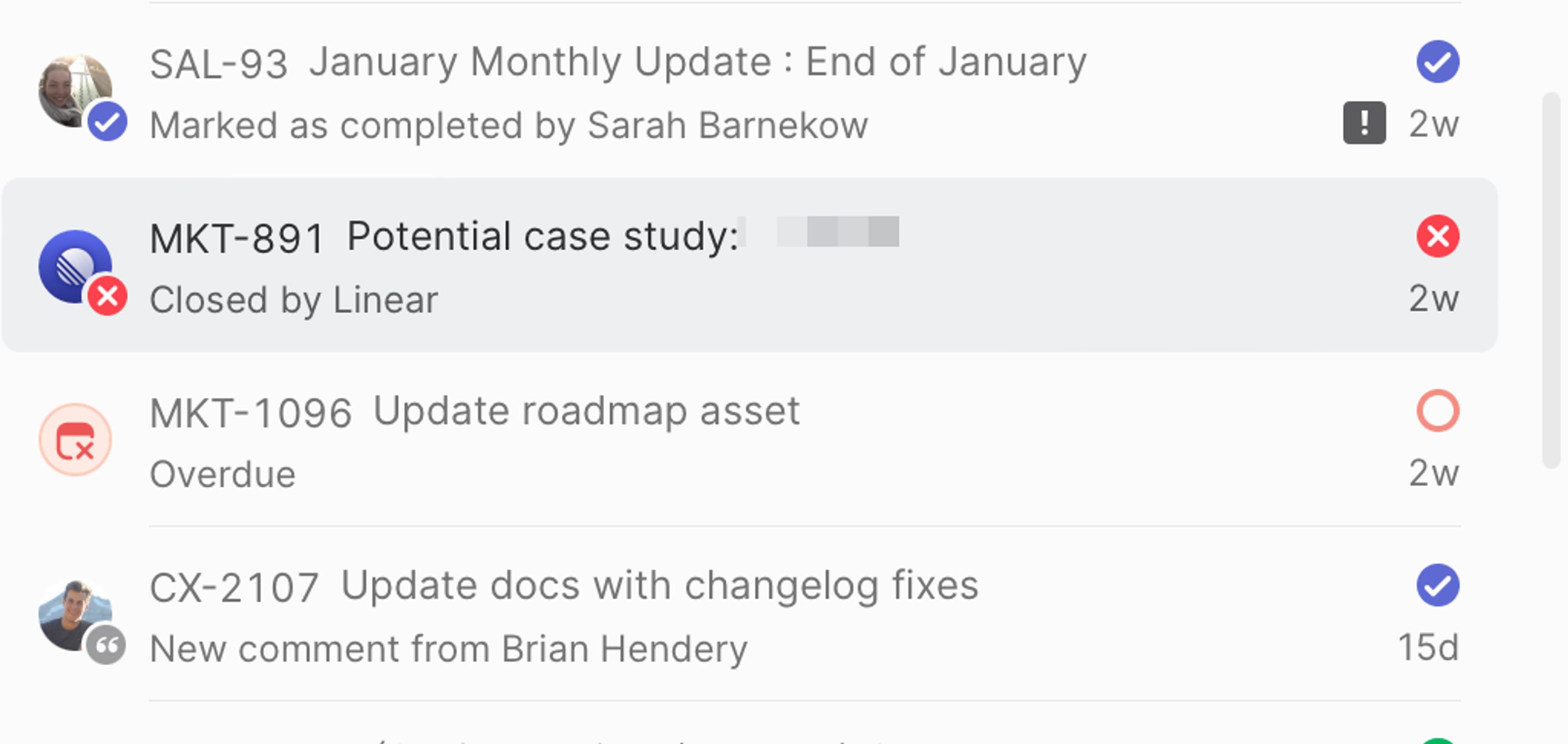
Use SLAs to apply deadlines to issues automatically and create workflows that prioritize issues based on parameters such as label, team, and priority.
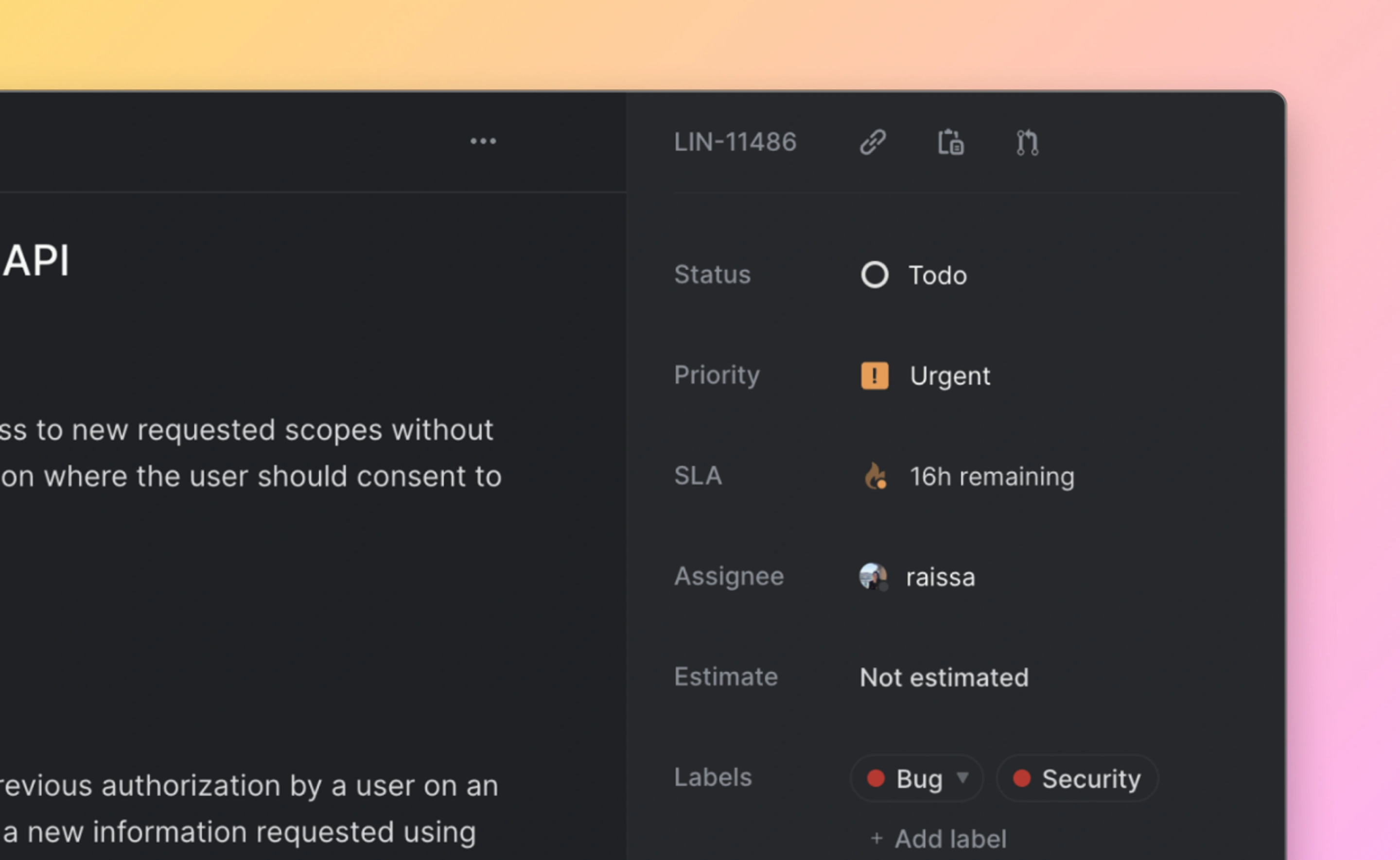
AI surfaces duplicate and related issues while you're creating them, reducing clutter in your backlog.

Become agile by abandoning Agile
The point of any development process or practice should be to help you ship higher quality products faster. Traditional Agile methods fail when they elevate process above product and lose sight of the reason a practice or process was created in the first place.
Software is built differently today than it was when the Agile Manifesto was written. If companies want engineers to feel engaged, creative, and productive, then they need processes that suit the way modern development teams work
Most importantly, companies need to recognize the importance of getting started. Agile’s expiration is long past due, so companies — working closely with their engineers – have to start rethinking the way they work and continuously iterate to find the process that works best for their business.
Learn more about the Linear Method and the practices we recommend modern product teams adopt here.